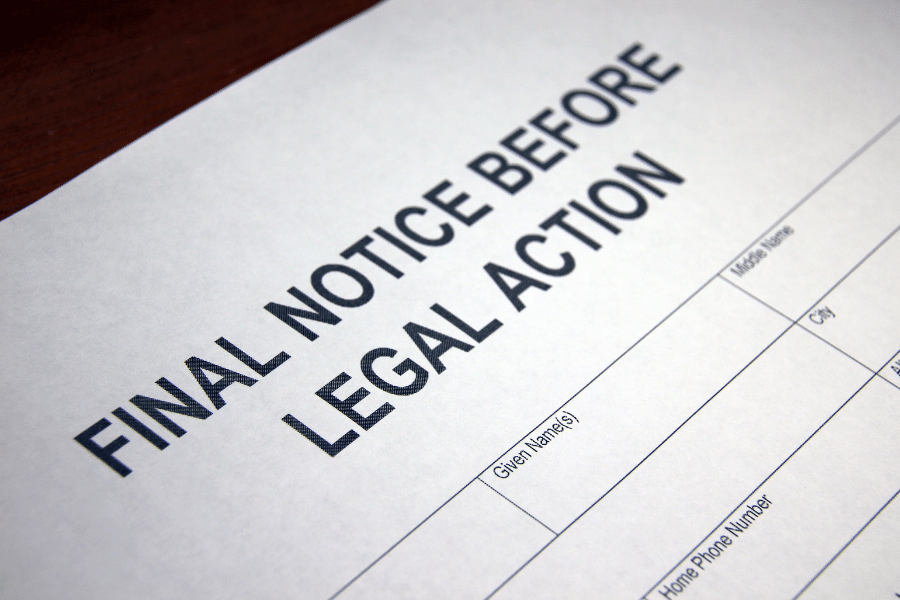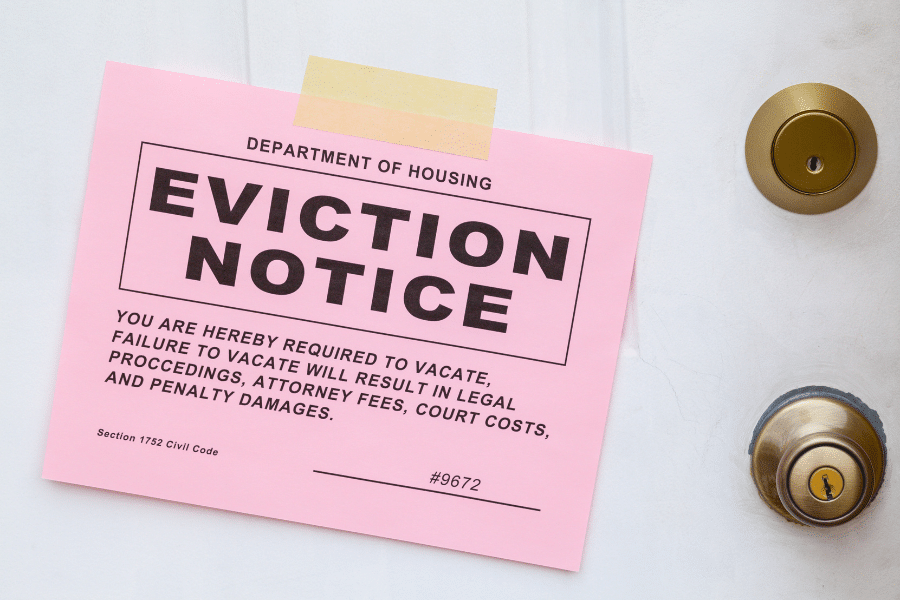Initial Steps to Take When Rent is Late
When you first realize that your tenant has missed a rent payment, it’s important to handle the situation calmly and professionally. Here are the initial steps you should take:
1. Friendly Reminder
The first step is often the simplest: reach out to your tenant with a friendly reminder. Sometimes, tenants forget to make payments due to busy schedules or simple oversight. A polite phone call, email, or text message can be a helpful nudge and can often resolve the issue without further action.
Example Message: “Hi [Tenant’s Name], we noticed that we haven’t received your rent payment for this month. Please let us know if there are any issues or if you need assistance. Thank you!”
2. Review Lease Agreement
Next, review the terms outlined in your lease agreement regarding late payments. Your lease should specify when rent is due, any applicable grace periods, and the penalties for late payments. Understanding these details will help you enforce the agreement and communicate clearly with your tenant.
- Grace Periods: Check if there’s a grace period for late payments, typically ranging from three to five days.
- Late Fees: Determine the late fees that apply and ensure they are reasonable and compliant with California law.
3. Late Fees and Notices
If the friendly reminder does not resolve the issue, consider applying any late fees as stipulated in the lease agreement. Clearly communicate these fees to your tenant along with a formal late payment notice.
Sample Notice: “Dear [Tenant’s Name], according to your lease agreement, a late fee of $[amount] has been applied to your overdue rent payment. Please remit the total amount of $[total amount] by [specific date] to avoid further action.”
By starting with these initial steps, you address the issue promptly and maintain a professional demeanor, which is crucial for preserving a good landlord-tenant relationship.
Legal Notices

When rent remains unpaid despite initial reminders, it’s time to move to the next step: issuing a formal legal notice. In California, this typically involves serving a 3-Day Notice to Pay Rent or Quit. This notice is a crucial part of the eviction process and must be handled correctly to ensure it is legally binding.
1. 3-Day Notice to Pay Rent or Quit
The 3-Day Notice to Pay Rent or Quit informs the tenant that they must pay the overdue rent within three days or vacate the property. This notice must be in writing and include specific information to be legally valid.
Required Information:
- Tenant’s Name: Ensure the notice is addressed to the correct tenant(s).
- Property Address: Clearly state the address of the rental property.
- Amount Owed: Specify the exact amount of overdue rent. Do not include late fees..
- Payment Instructions: Include the name, address, and phone number of the person to whom the rent should be paid, along with the usual days and hours they are available to receive the payment.
- Date of Notice: Indicate the date the notice is served.
- Consequence of Non-Payment: State that the tenant must pay the rent within three days or face eviction proceedings.
2. Serving the Notice
Properly serving the notice is essential for it to be legally enforceable. In California, there are several acceptable methods for serving a 3-Day Notice to Pay Rent or Quit:
- Personal Delivery: Hand the notice directly to the tenant.
- Substitute Service and Mailing: If the tenant is not available, give the notice to someone of suitable age at the property and mail a copy to the tenant.
- Posting and Mailing: If no one is available, post the notice in a conspicuous place at the rental property and mail a copy to the tenant.
3. Documenting the Notice
Keep a record of the notice and how it was served. This documentation is crucial if the case goes to court. Include the following:
- A copy of the notice served.
- A certificate of service detailing how and when the notice was served.
- Any correspondence or proof of delivery, such as a return receipt from certified mail.
By issuing and documenting a proper 3-Day Notice to Pay Rent or Quit, you set the stage for legal action if necessary while ensuring you comply with California’s landlord-tenant laws.
Exploring Alternatives Before Eviction

Before resorting to the eviction process, it’s often beneficial to explore alternative solutions. These can help resolve the issue amicably and potentially preserve the landlord-tenant relationship.
1. Payment Plan Agreement
One alternative to eviction is negotiating a payment plan with your tenant. This can provide them with the flexibility to catch up on overdue rent without the immediate threat of eviction.
Steps to Create a Payment Plan:
- Discuss Terms: Talk to your tenant to understand their financial situation and agree on a feasible payment schedule.
- Formalize the Agreement: Draft a written agreement outlining the payment plan terms. Include specifics such as the total amount owed, the payment schedule, and consequences for non-compliance.
- Signatures: Ensure both parties sign the agreement to make it legally binding.
Sample Clause: “If the tenant fails to comply with the payment plan, the landlord reserves the right to initiate eviction proceedings as per the original lease terms.”
2. Mediation and Arbitration
Mediation and arbitration are forms of alternative dispute resolution that can be less costly and more amicable than court proceedings.
Mediation:
- Process: Involves a neutral third party (mediator) who helps both parties negotiate a mutually acceptable solution.
- Benefits: Can preserve relationships and is often quicker and less formal than court.
- Outcome: Non-binding, meaning either party can still pursue legal action if no agreement is reached.
Arbitration:
- Process: A neutral third party (arbitrator) hears both sides and makes a binding decision.
- Benefits: Faster than court and legally binding, which means the decision is enforceable.
- Outcome: Legally binding and usually cannot be appealed.
By considering these alternatives, landlords may find a resolution that benefits both parties without the need for eviction.
The Eviction Process

When all other efforts fail and the tenant still has not paid rent, initiating the eviction process becomes necessary. This section outlines the steps involved in the California eviction process, ensuring that you follow legal procedures to avoid any setbacks.
1. Filing an Unlawful Detainer Lawsuit
Once the 3-Day Notice to Pay Rent or Quit period has expired without payment, you can file an unlawful detainer lawsuit. This legal action seeks to remove the tenant from the property.
Steps to File:
- Prepare the Required Documents: Gather all necessary documentation, including the lease agreement, the 3-Day Notice, proof of service, and any relevant communication records.
- Complete Court Forms: Fill out the Summons for Unlawful Detainer/Eviction, Complaint for Unlawful Detainer, Plaintiff’s Mandatory Cover Sheet for Supplemental Allegations, and Civil Case Cover Sheet.
- File the Complaint: Submit the completed forms to the Superior Court in the county where the rental property is located. The filing fee ranges between $240 and $435.
- Serve the Summons and Complaint: Serve the tenant with the court papers. This can be done through personal delivery, substitute service, or posting and mailing, similar to the notice procedure. However, the court typically requires personal service.
2. Court Proceedings
After filing, the tenant has a limited time to respond. The response period is typically 5 days if personally served, or 15 days if served by other means
Possible Outcomes:
- Tenant Response: If the tenant responds, a court hearing will be scheduled. Both parties present their cases, and the judge makes a ruling.
- Default Judgment: If the tenant does not respond, you can request a default judgment, which usually results in a ruling in your favor.
3. Writ of Possession
If you win the case, the court will issue a Writ of Possession, instructing the sheriff to remove the tenant from the property. The sheriff will:
- Serve the Writ: Notify the tenant of the eviction and provide a five-day notice to vacate.
- Enforce the Writ: After the notice period, the sheriff will physically remove the tenant if they have not left voluntarily.
4. Handling Security Deposits
After regaining possession of the property, you must address the security deposit. California law allows you to deduct unpaid rent from the deposit but requires you to return any remaining balance within 21 days, along with an itemized statement of deductions.
By following these steps meticulously, you ensure that the eviction process is conducted legally, minimizing the risk of delays or legal complications.
Post-Eviction Actions

After successfully navigating the eviction process and regaining possession of your property, there are several important steps to take to ensure everything is handled properly and legally.
1. Writ of Possession
Once you have won your unlawful detainer case, the court issues a Writ of Possession, which authorizes the sheriff to enforce the eviction. Here’s what happens next:
- Sheriff’s Notice: The sheriff will post a notice on the property giving the tenant five days to vacate.
- Physical Eviction: If the tenant does not leave voluntarily within the given period, the sheriff will physically remove them from the property. You will need to be present during this lockout to take possession of the property and ensure that the locks are changed.
2. Handling Security Deposits
California law outlines specific rules for handling a tenant’s security deposit after eviction:
- Itemized Statement: Within 21 days of the tenant vacating the property, you must provide an itemized statement detailing any deductions from the security deposit. This can include unpaid rent, damage beyond normal wear and tear, and cleaning costs necessary to restore the property to its original condition.
- Return of Deposit: Along with the itemized statement, return any remaining balance of the security deposit to the tenant.
Example of an Itemized Statement:
- Unpaid rent for March: $800
- Cleaning costs: $150
- Repairs for damaged flooring: $200
- Total deductions: $1,150
- Remaining deposit returned: $350
3. Repair and Maintenance
After the eviction, inspect the property thoroughly and make any necessary repairs. Address any damage, repaint, and clean to prepare the property for the next tenant. It’s essential to restore the property to a rentable condition promptly to minimize the vacancy period.
By handling these post-eviction actions efficiently, you can mitigate the financial impact of an eviction and ensure your property is quickly rented to a reliable tenant.
Legal Protections for Tenants
Understanding the legal protections for tenants is crucial for landlords to ensure they remain compliant with California laws. These protections aim to balance the rights of tenants and landlords, ensuring fair treatment and preventing unlawful practices.
1. Tenants’ Rights to Withhold Rent
In certain circumstances, tenants have the legal right to withhold rent. Knowing these conditions helps landlords address issues proactively and avoid legal disputes.
Uninhabitable Conditions:
- Habitability Standards: California law requires landlords to maintain rental properties in a habitable condition. This includes providing essential services such as hot and cold running water, heating, and working plumbing.
- Withholding Rent: If a landlord fails to make necessary repairs that affect the property’s habitability, tenants can withhold rent until the issues are resolved (Landlord Tenant Resource).
Landlord’s Breach of the Lease:
- Violations of Lease Terms: If a landlord violates the terms of the lease agreement or engages in illegal activities such as harassment or unauthorized entry, tenants may have grounds to withhold rent.
- Legal Actions: Tenants can also seek legal remedies, including breaking the lease without penalty or suing the landlord for damages.
2. Protections Against Retaliatory Evictions
California law protects tenants from retaliatory actions by landlords. Retaliation can occur if a landlord attempts to evict a tenant for exercising their legal rights.
Examples of Protected Actions:
- Reporting Code Violations: Tenants who report health and safety violations to authorities are protected from eviction or rent increases in retaliation.
- Participating in Tenant Unions: Tenants engaging in activities related to tenant organizations or unions are also protected.
Legal Consequences for Retaliation:
- Tenant’s Rights: Tenants who face retaliatory actions can file a complaint with the local housing authority or take the matter to court.
- Penalties for Landlords: Landlords found guilty of retaliation may face penalties, including fines and damages awarded to the tenant.
3. Anti-Discrimination Laws
Federal and state laws protect tenants from discrimination based on race, color, national origin, religion, sex, familial status, disability, and other protected characteristics.
Key Protections:
- Fair Housing Act: This federal law prohibits discrimination in housing practices, including renting, advertising, and tenant selection.
- California Fair Employment and Housing Act (FEHA): This state law extends protections and prohibits discrimination based on additional characteristics such as gender identity and sexual orientation.
Complying with Anti-Discrimination Laws:
- Fair Screening Practices: Ensure that tenant screening processes are fair and consistent, avoiding any practices that could be construed as discriminatory.
- Inclusive Advertising: Advertisements for rental properties should be inclusive and free from language that discriminates against potential tenants.
By understanding and respecting these legal protections, landlords can foster a positive and compliant rental environment, minimizing the risk of legal disputes and promoting fair treatment for all tenants.
Preventive Measures for Landlords

Preventive measures can help landlords avoid the stress and financial loss associated with non-payment of rent. By implementing effective strategies from the start, landlords can minimize the risk of encountering issues with their tenants.
1. Screening Tenants
Thorough tenant screening is the first line of defense against potential problems. Effective screening helps ensure that you select reliable tenants who are likely to pay rent on time and take care of your property.
Key Steps in Tenant Screening:
- Background Checks: Conduct comprehensive background checks, including criminal history, credit reports, and rental history.
- Employment Verification: Verify the tenant’s employment status and income to ensure they can afford the rent.
- References: Contact previous landlords for references to understand the applicant’s rental history and behavior.
Best Practices:
- Use a standardized application form to collect necessary information consistently.
- Ensure compliance with Fair Housing laws during the screening process to avoid discrimination.
2. Drafting Robust Lease Agreements
A clear and comprehensive lease agreement is crucial for setting expectations and protecting both parties. A well-drafted lease can prevent misunderstandings and disputes.
Key Clauses to Include:
- Payment Terms: Specify the rent amount, due date, and acceptable payment methods.
- Late Fees: Outline any late fees or penalties for overdue rent, ensuring they comply with California law.
- Maintenance Responsibilities: Clarify the maintenance responsibilities of both the landlord and tenant to avoid disputes over repairs.
- Notice Requirements: Detail the notice requirements for both parties regarding lease termination, rent increases, and other significant changes.
Legal Compliance:
- Ensure the lease agreement complies with all relevant local, state, and federal laws.
- Consider having an attorney review the lease to ensure it’s legally sound and comprehensive (Tenants Law Firm).
3. Regular Property Inspections
Regular inspections help you stay informed about the condition of your property and address any issues early. Inspections can also deter tenants from neglecting or damaging the property.
Inspection Tips:
- Move-In and Move-Out Inspections: Conduct thorough inspections before the tenant moves in and after they move out to document the property’s condition.
- Routine Inspections: Schedule regular inspections (e.g., annually or bi-annually) to check for maintenance issues and ensure the tenant is complying with the lease terms.
- Proper Notice: Always provide proper notice to the tenant before conducting an inspection, typically 24 to 48 hours, as required by California law (California Courts Self-Help).
By implementing these preventive measures, landlords can significantly reduce the likelihood of encountering issues with non-payment and maintain a positive landlord-tenant relationship.
Conclusion
Navigating the challenges of a tenant not paying rent can be a stressful experience for landlords. However, by understanding and following the proper legal procedures in California landlords can manage these situations effectively and minimize potential financial losses.
Summary of Key Points:
- Initial Steps: Start with a friendly reminder and review the lease agreement to ensure all terms are clear and followed.
- Legal Notices: Issue a 3-Day Notice to Pay Rent or Quit if the tenant does not pay rent after initial reminders. Ensure its is properly served and documented.
- Alternative Solutions: Explore options like payment plans, mediation, and arbitration to resolve the issue amicably before resorting to eviction.
- Eviction Process: If necessary, file an unlawful detainer lawsuit, follow court procedures, and obtain a Writ of Possession to legally evict the tenant.
- Post-Eviction Actions: Handle the security deposit as per legal requirements, repair and prepare the property for re-renting, and implement preventive measures to avoid future issues.
- Tenant Protections: Be aware of tenant rights, including the right to withhold rent under certain conditions, protections against retaliatory evictions, and anti-discrimination laws.
- Preventive Measures: Screen tenants thoroughly, draft robust lease agreements, and conduct regular property inspections to minimize risks.
By taking these steps, landlords can ensure they handle non-payment of rent situations legally, professionally, and effectively. Maintaining good communication and being proactive in addressing potential issues can also help foster positive landlord-tenant relationships, which ultimately benefits both parties.





